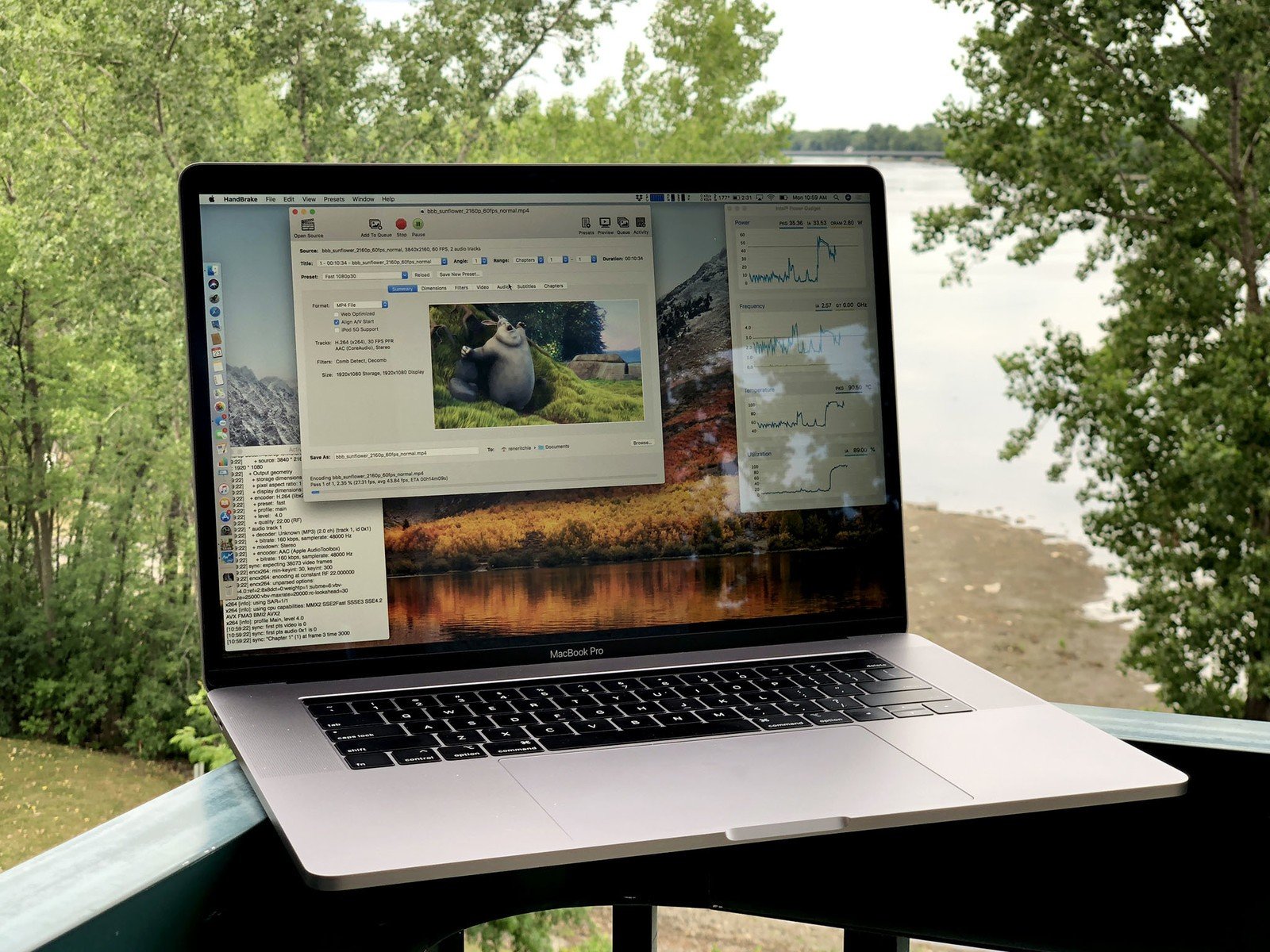The good, the bad, and the mysterious of a 16-inch MacBook Pro

While it has yet to appear, Apple is heavily rumored to be producing a 16-inch variant of the MacBook Pro. This would be the first new screen size added to the MacBook Pro lineup since the introduction of the 13-inch model in 2009. It would also be the largest display on a MacBook Pro since Apple discontinued the 17-inch model in 2012.
A recent code-diving expedition unearthed what appeared to be an icon of the 16-inch MacBook Pro, so we may have gotten our first (kind of) look at this thing. It doesn't look that different from the current 15-inch MacBook Pro, and that can actually be both good and bad.
Here's how I think it could break down.
The Good: Bigger screen without a bigger MacBook
If the image that appeared in the macOS Catalina 10.15.1 beta is indeed a 16-inch MacBook Pro, it would appear that the laptop isn't getting a bigger footprint, or at least not much bigger. Instead, it appears that Apple, as it has done for both the iPhone and the iPad Pro, has brought its War on Bezels to the Mac, shrinking the bezels on the MacBook Pro to increase the size of its display.
That's certainly plausible, as the 15-inch MacBook Pro currently has a noticeable amount of bezel. Shrinking it for a bigger display while keeping the overall size of the computer the same as the 15-inch model. This allows it not only to be as portable as its slightly-smaller sibling, but it also won't take up more space on your desk or lap, and it probably also won't be much heavier when you go to put it in your bag. A larger computer means more metal, which, despite aluminum's lightness, means more weight.
The Bad: Industrial design is standing in place
Again, this is assuming that the leaked icon is indeed referencing the 16-inch MacBook Pro. And if it is, it seems as though, aside from the bigger display, we can expect the design of the MacBook to remain unchanged from the current models. While there's something to be said for consistency, Apple has been using (increasingly thinner) versions of its current design language for the MacBook Pro since 2008. It's okay to shake things up a little.
I don't need Apple to offer a new design for their products every year. For God's sake, the iMac's design language goes back even farther than the MacBook Pro's. But if Apple's going to release a new screen size on the MacBook Pro, it would be great if it could stand out a little more.
Master your iPhone in minutes
iMore offers spot-on advice and guidance from our team of experts, with decades of Apple device experience to lean on. Learn more with iMore!
I have a hypothesis as to why Apple seems to be sticking with its current industrial design trends for the MacBook Pro, but more on that later.
The Good: Keyboard improvements
I'm still rocking a 2013 MacBook Pro, so I've missed the butterfly keyboard era entirely so far. And while I don't know just how widespread problems truly are with Apple's butterfly switch, they do seem to be more prevalent than they were in pre-2016 models of MacBook Pro.
Apple will reportedly be returning to the scissor switch for the 16-inch MacBook Pro (and other models in the MacBook lineup in 2020). This is the keyboard switch that was in use before 2016, when Apple was considered to have some of, if not the, best laptop keyboards around. Indeed, in the six years that I've been using this MacBook Pro, I've only had a couple of problems, and those have only cropped up in the last few months.
While Apple has seemingly done everything it can to improve on the butterfly mechanism and increase reliability, it seems like returning to the scissor switch will be a positive step in the eyes of many Apple customers.
The Bad: Not so many ports in a storm
Related to the issue of static industrial design, it seems likely that the 16-inch MacBook Pro will keep the same port configuration as the 15-inch model. That means four Thunderbolt 3 ports and a 3.5 mm headphone jack.
This wouldn't be that surprising. I wouldn't, after all, expect Apple to reintroduce USB-A, HDMI, or other such ports to the MacBook Pro, not in an increasingly USB-C world. I wouldn't even hold out for the return of my beloved MagSafe connector. But would it kill Apple to bring the SD card slot back? What about another set of Thunderbolt 3 ports?
If you were hoping to see a radically different port situation on the MacBook Pro, I'd let go of that hope now.
Why do this?
The question I keep asking myself about the 16-inch MacBook Pro is: why? Why add a screen size to the MacBook Pro lineup now, so close to 2020, after having just refreshed the MacBook Pro earlier this year? Especially when there's such a major change to the Mac lineup said to be on the way.
Apple is rumored to be preparing a for a major transition for Macs, the move from Intel processors to Apple's own, custom-designed silicon. A combination of Apple's continually impressive in-house mobile A-series processors for iPhone and iPad and multiple chip release delays from Intel have had people speculate about this outcome for years, and recent reports point to a 2020 launch for ARM-based, Apple-designed Mac chips.
Laptops seem to be likely first candidates to get such chips, as Apple would probably like to tout any improvements in battery life and performance per watt. While I've long thought that the MacBook Air, Apple's mainstream laptop, is the likely first candidate for the switch, I don't think an ARM-based MacBook Pro is entirely out of the question.
If Apple is indeed planning an ARM-based MacBook Pro, I also think a few more noticeable changes to the form factor could be used to mark the occasion. Before now, I would have thought that this could include a new screen size, but it seems that Apple's first new screen size in a decade won't be the first of a new era of Mac laptops, but the last of the current one.
Perhaps the 16-inch MacBook Pro is the last hurrah for Apple's Intel MacBooks. If the company is planning a relatively quick switch to its own processors in Macs, with multiple models arriving, sans Intel, in 2020, the 16-inch Pro, complete with a new screen size and a scissor switch keyboard, could be a great machine for those professionals, including developers, that might be too nervous to make the switch as soon as next year. It stands to reason that not all of your favorite software will work out-of-the-box on an ARM Mac, so it's possible that the 16-inch MacBook Pro will be a way for developers to have the newest MacBook possible that still runs a powerful Intel processor.
But that's just my hypothesis.
What do you think?
How do you think a 16-inch MacBook Pro would fit into Apple's lineup, and what are your hopes for it? Let us know in the comments.
Joseph Keller is the former Editor in Chief of iMore. An Apple user for almost 20 years, he spends his time learning the ins and outs of iOS and macOS, always finding ways of getting the most out of his iPhone, iPad, Apple Watch, and Mac.

